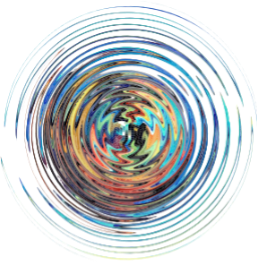What Would Happen if Schools Taught Kindness?
What would education look like if its purpose were not
to create a workforce, but whole human beings?
Parker Palmer
Andy Smallman is a teacher who wrote his master’s thesis on “trying to empower children to take charge of their education.” He believed that allowing them to pursue their interests and to follow their curiosity, they would remain engaged and be excited about learning.
He wondered what would happen if a school included kindness in its curriculum. As part of a group of parents who started the Puget Sound Community School (PSCS) in 1994, he had an opportunity to find out. The school, for grades 6 to 12, was “founded upon the belief that people are intrinsically compelled by their own curiosity and desires to learn, and when provided a positive and supportive environment …will enthusiastically pursue meaningful and challenging tasks.”
Andy created a program that enabled students to experience the pleasure that comes from acts of kindness. The program was designed to take people on a journey, learning different ways to expand the reach of their kindness as they perform the recommended actions in the program.
The experiment with the students in their school was so successful that, in 2011, Andy created an online version of the program open to the public. 250 “students” from around the world practiced random acts of kindness that had a positive impact on their communities.
The website, Kind Living, invites anyone of any age to experience the kindness practices in the program. Kind Living promotes ordinary activities that "awaken kindness and awe, helping people connect to their true nature and increase peace in the world."
The program consists of 5 modules. Each module includes three assignments, so anyone completing the entire course will have performed at least 15 different types of kind acts. Andy recommends taking a week for each type, doing at least one kind act every day.
Module 1 - Practice of Kindness
Do something kind for yourself.
It is important to take care of yourself first. You will get more from this exercise if you plan your action mindfully, paying extra attention to doing something you might not normally allow yourself to do.
Do something kind for a good friend (or family member)
Keep looking for opportunities to be kind. You may be inspired to do something that you do not usually do. You might choose to continue a kind action that is part of your usual interaction, but now, you do it in a more conscious way, so that you can appreciate the impact it has on your friend’s life and on yours.
Do something kind for a stranger
These acts can be as simple as a smile. Be inspired by the situation and take whatever action you feel called to take. As you perform them, “put your heart into the action and let the act of doing so warm you.”
Module 2 - Anonymous Kindness
Do something small.
Begin by mindfully completing several very small, even seemingly insignificant acts of anonymous kindness. “The key here is that you put your full self into it.”
Provide something wonderful for someone to find
Be creative. This invites you to arrange something to be found by another person while you remain anonymous. It does not need to be big or elaborate. The wonderful part is the surprise of the person who finds it.
Enlist a partner
Sometimes we need help to pull off an anonymous act. Together, you can come up with a creative way to bring some delight or a pleasant surprise into someone’s life.
These two modules were followed by three that took their inspiration from current media at the time the program was written.
Module 3 - Twilight Zone Kindness - using a classic tv show to inspire acts of kindness.
Module 4 - Stargirl Kindness - The novel of a fictional teenage girl inspired kindness.
Module 5 - Did I Ever Tell You How Lucky You Are? - Kindness inspired by the delightful book by Dr. Seuss.
Andy shared a few examples of kind acts by participants in the program, giving us ideas for our own kindness practice.
Class members wrote anonymous compliments to co-workers, left homegrown pears out for passers-by, cleaned street storm drains, picked up trash and slipped a $20 bill inside the next empty cup that a barista would pick up.
A woman bought a $15 grocery store gift card and left it on the windshield for a young mother who had just entered a nearby unemployment/welfare office.
Another kindness student, after running a half-marathon, gave her participation medal to the 76-year-old man who finished last, because race organizers by then had run out of medals.
Shortly after the killing of four Lakewood police officers, a real-estate agent and a board member at Smallman’s school, went to a Starbucks near his office where officers from Seattle’s Harbor Patrol often go, and paid in advance for their next order.
Creating Ripples
Andy summed up his inspiration for the program: “It was the idea of throwing a little pebble into a pond and seeing how far the ripples would go,” he said. “If more people realize what they do with their acts of kindness … we will live in a better place.”
What would our world be like if all schools provided opportunities for children to discover the joy that comes from practicing kindness?
I received inspiration from these sources:
Kind Living Website
Kind Living class
Andy Smallman - Kindness as an Avenue to Awe
Kindness Taught in Seattle's School Online Class

